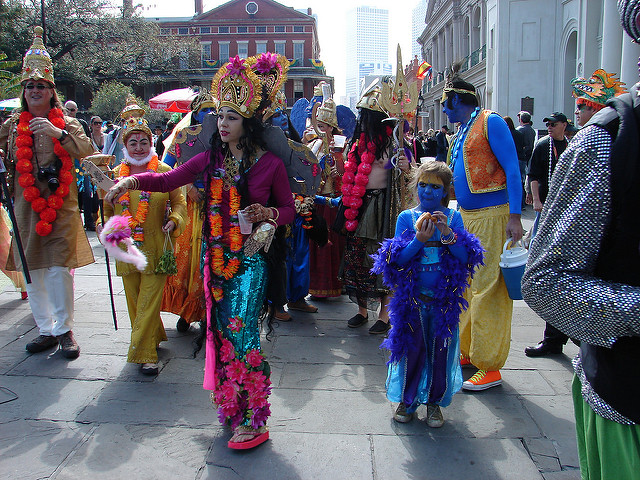As one of the most highly anticipated parties of the year, Carnival season and Mardi Gras make visiting New Orleans, Louisiana, nothing less than spectacular. When your private jet lands in New Orleans, your days will be packed with more parties, king cakes and parades than you could ever imagine. In 2017, Mardi Gras is on Tuesday, February 28, the perfect time for putting your worries aside for a few days and joining one of America’s greatest and oldest celebrations.
Why is Mardi Gras a Different Day Every Year? How Does it Differ from Carnival?
Carnival is a period of celebration that begins with the Christian Feast of the Epiphany, or Three Kings Day, which starts on the 12th day of Christmas, January 6. The Carnival festivities culminate on the day before Ash Wednesday, which is Mardi Gras, or Fat Tuesday. Traditionally, Mardi Gras commemorated the eating of fatty foods before fasting for the Lenten season.
The day that Mardi Gras takes place depends on the day that Easter Sunday falls, as the celebration always occurs 47 days before Easter. Easter Sunday varies year to year because it corresponds with the Jewish Passover, which is tied to the lunar calendar and celebrated on the first full moon after the vernal equinox.
The Mardi Gras celebration came to North America from France, where residents celebrated it since the Middle Ages. On March 3, 1699, French explorer Iberville set up camp about 60 miles south of present-day New Orleans, christening the site Point du Mardi Gras.
What to Expect during Carnival and Mardi Gras in NOLA
Early public celebrations of Mardi Gras in the U.S. consisted of costumed revelers parading the streets of New Orleans. Today the costumes are more elaborate, the floats are grander and people from across the nation flock to the Louisiana for a chance to score baubles and doubloons.
The week before Mardi Gras is the prime time to visit New Orleans. If you only have a limited time to join in the festivities, the best time to arrive is the Friday or Saturday before Mardi Gras. If you can, stay until Ash Wednesday. This weekend is when the biggest parades of the season, Bacchus and Endymion, roll out onto streets packed with parade watchers. Monday is the all-day Zulu Lundi Gras festival with its famed Orpheus parade.
When you tour the streets, you’ll see trees adorned with beads and many people in costumes as jazz fills the air. Along St. Charles Avenue, hardcore parade-goers camp out for hours to secure the best viewing spots. Those who want to spend their time exploring the city purchase New Orleans Parade Tickets to secure grandstand seats in the middle of the action.
Contrary to the media hype, Mardi Gras is largely a kid-friendly, family celebration. Revelers often carry big bags to carry all the swag they collect from people on floats, such as beaded necklaces, candy, toys shoes, bags, accessories and stuffed animals. You’ll find families watching the parades at St. Charles Avenue, particularly around the Garden District. The nearby Metairie suburb is also ideal for kids for its Caesar parade on the Saturday before Mardi Gras weekend. The area where parents do find themselves covering their children’s eyes is in the French Quarter, where full-sized parades do not pass and risqué behavior is permitted.
Mardi Gras Wisdom
When visiting New Orleans to experience Mardi Gras for the first time, it is tempting to want to pick up swag on the ground as floats pass. Fight the urge to do so or your fingers will be sorry. Instead, put your foot on the item and pick it up after the float passes. Similarly, it is a good idea to wear closed-toe shoes that you don’t mind getting dirty because people jumping for beads don’t always pay attention to where their feet land.
While the parties and parades are the main events in New Orleans, don’t forget to check out other fascinating attractions, such as historic Jackson Square, Bourbon Street and the Garden District. Stop into Café de Monde for a bite of its world-famous beignets.

